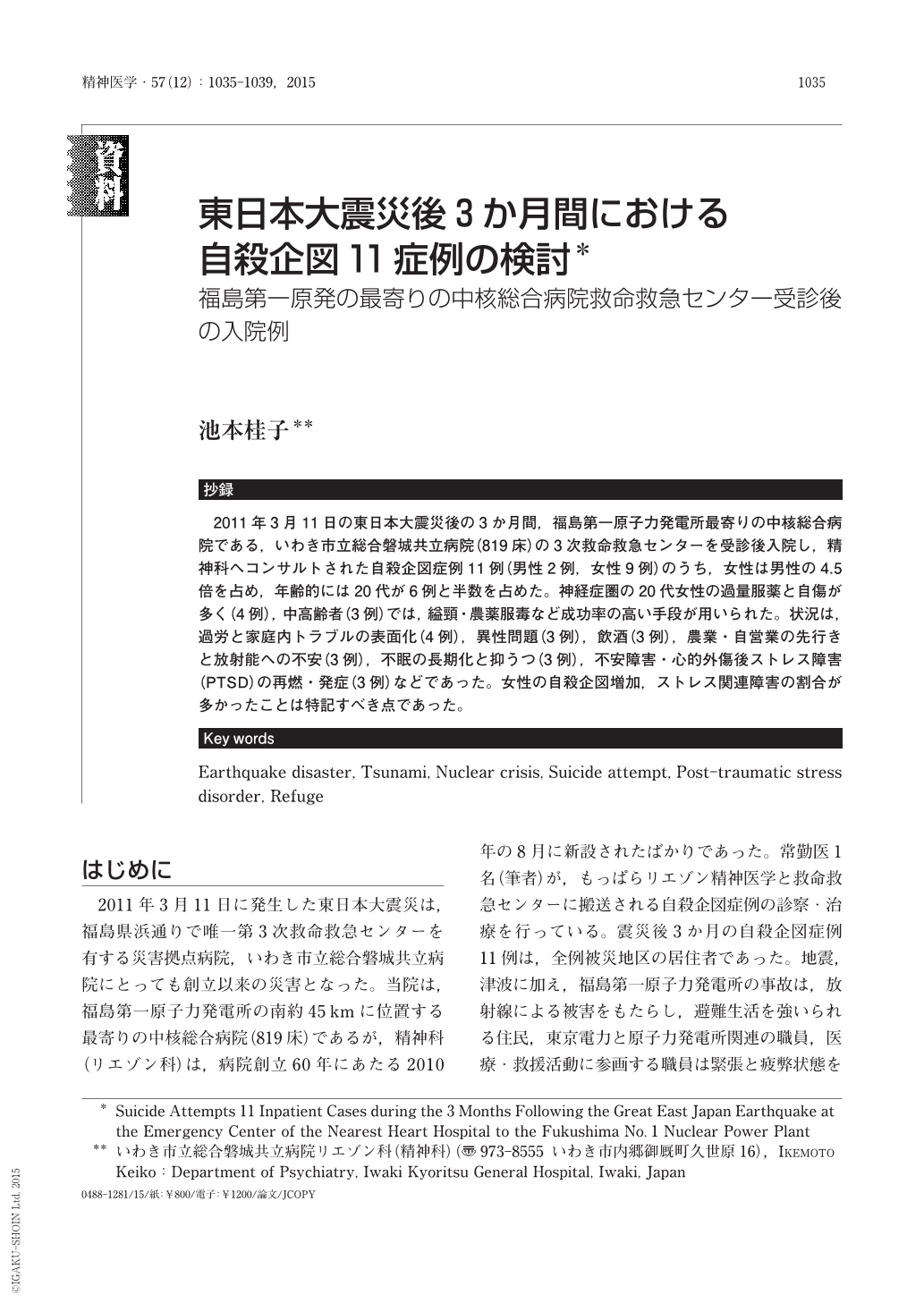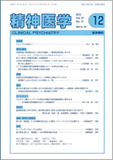Japanese
English
- 有料閲覧
- Abstract 文献概要
- 1ページ目 Look Inside
- 参考文献 Reference
抄録
2011年3月11日の東日本大震災後の3か月間,福島第一原子力発電所最寄りの中核総合病院である,いわき市立総合磐城共立病院(819床)の3次救命救急センターを受診後入院し,精神科へコンサルトされた自殺企図症例11例(男性2例,女性9例)のうち,女性は男性の4.5倍を占め,年齢的には20代が6例と半数を占めた。神経症圏の20代女性の過量服薬と自傷が多く(4例),中高齢者(3例)では,縊頸・農薬服毒など成功率の高い手段が用いられた。状況は,過労と家庭内トラブルの表面化(4例),異性問題(3例),飲酒(3例),農業・自営業の先行きと放射能への不安(3例),不眠の長期化と抑うつ(3例),不安障害・心的外傷後ストレス障害(PTSD)の再燃・発症(3例)などであった。女性の自殺企図増加,ストレス関連障害の割合が多かったことは特記すべき点であった。
The clinical features of 11 (male:2, female:9) patients, who were admitted to Iwaki Kyoritsu General Hospital because of suicide attempts, and who were referred from the Tertiary Emergency Center to the Department of Psychiatry during the 3 months following the Great East Japan Earthquake on March 11, 2011, were analyzed. The number of female cases was 4.5 times that of male cases, and half of all cases (6 cases) were people in their 20s. The preferred methods for neurotic young females were drug overdose and self-mutilation, including wrist-cutting (4 cases). Older females preferred hanging or self-poisoning, which were likely to be successful (3 cases). Environmental or psychogenic factors varied between the cases, for example, manifestation of familial problems and fatigue (4 cases), sexual problems (3 cases), drinking (3 cases), concern about agriculture and radiation (3 cases), prolonged insomnia and depression (3 cases), and recurrence or incidence of post-traumatic stress syndrome or anxiety disorders (3 cases). Among the patients admitted for attempted suicide at the Emergency Center in the same period of 2010 and 2011, the most frequent cases were females whose preferred method was acute poisoning with therapeutic agents. The number of completed suicide cases at the Emergency Center during those 3-month periods was 1 male case each in 2010 and 2011;female completed suicide cases increased from 0 in 2010 to 4 cases in 2011.

Copyright © 2015, Igaku-Shoin Ltd. All rights reserved.


